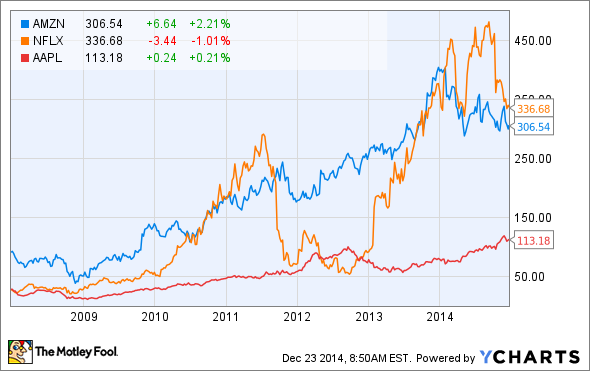What Investors Considering Dividend Producing Investments Need to Know
Post on: 3 Май, 2015 No Comment

Posted on November 21, 2012 by Rick Rodgers
The tax rate for qualified dividends is scheduled to rise from a maximum rate of 15% this year to 39.6% in 2013. The new Medicare tax, which is part of the healthcare reform act, will add an additional 3.8% tax putting the top tax rate on dividends at 43.4%. There will most likely be efforts made to keep the maximum tax rate on dividends at 15%. Taxing dividends has been a contentious issue for a long time and the pro and con advocates are already attempting to make their case.
There is no question that dividends are exposed to double taxation. First, corporations pay tax on their earnings and dividends are declared on the net after-tax earnings. Secondly, the investor receives the dividend and is taxed on those dividends at his or her ordinary income tax rate.
Corporations have the choice of paying dividends or reinvesting the earnings in their businesses and hopefully adding shareholder value in the form of capital growth. Investors could capitalize on this growth by selling the stock and paying capital gains tax on the increased value. If capital gains are taxed at a lower rate than dividends, tax sensitive investors will prefer investing in companies that favor growth. The Jobs and Growth Tax Relief Reconciliation Act of 2003 made the tax rate on capital gains and qualified dividends equal.
Dividends have become very popular with investors since the Great Panic of 2008. Capital gains have been hard to come by and interest rates are at historic lows. The dividend yield on the S&P 500 stock index is currently greater than the yield of a ten-year Treasury Note. It’s not surprising that there is interest in keeping the current tax rate on dividends!
Those in favor of keeping the current tax rate on dividends would make dividend-paying stocks more attractive to investors. They also say the lower tax rate spurs business investment and encourage corporations to finance growth by issuing stock rather than the more destabilizing method of borrowing money. However, corporate CFOs find borrowing to be more tax-efficient because interest paid is a tax-deductible business expense.
Those in favor of allowing the tax rate to increase make the point, as one might expect, that this is another case where a benefit goes only to the “rich” and is of little benefit to most taxpayers. However, more than half of all U.S. households own stocks in one form or another. It would seem that many middle class taxpayers would be negatively impacted if tax rates were allowed to increase on dividends. The Obama administration has proposed keeping tax rates on dividends at the current level for anyone earning less than $200,000 to address this issue.
Another argument against the lower tax rate is that it may lead to entirely unintended consequences. During the 1990s, corporations used their capital to reinvest in and grow their businesses. This expansion of capacity and productivity fueled one of the greatest Bull Markets for stocks in history. Without this reinvestment of capital, one has to wonder if the remarkable expansion and increased productivity would have been so remarkable.
It is important to point out that taxes paid on dividends could increase even if the current qualified tax status is maintained. I’ve already mentioned the Medicare tax scheduled to begin in 2013. Taxes on dividends will jump to 18.8% for taxpayers subject to this tax. Congress could also allow the return of the phase-out of itemized deductions and personal exemptions which would effectively increase the qualified dividend tax rate on high income taxpayers. The top tax rate on dividends would still rise from 15% to 23.8% (or even higher with phase-outs).
Finally, according to an article in the Wall Street Journal, more than half of all dividend-paying stocks are held by non-tax-paying entities, i.e. pensions, 401(k) accounts, IRA accounts, etc. Does the tax rate on dividends really matter?
Ricks Insights
- The tax rate on qualified dividends is currently tied to the tax rate on long-term capital gains. Dividends are subject to double taxation. The corporation pays tax on their earnings and then pays dividends to shareholders who must pay tax at their tax rate. The new Medicare Tax will raise the top tax rate on dividends in 2013 even if the current law is extended.
Read More From Rodgers & Associates
You’ve worked hard to save for retirement. How can you turn your wealth into an income that’s designed to last your lifetime?
Now that retirement is a reality, or will be soon, you probably have questions. Here on our website, you can find generalized advice, but don’t you deserve advice tailored just to you?
Since 2002 Mark Eisenberger has been helping people just like you get answers. Simply call him at 717-560-3800 or 1-888-876-3437. He’ll answer your questions and, if you wish, can arrange for up to two hours of initial consultation with no cost or obligation and no sales pitch. He appreciates calls from readers of our website and is happy to talk with you.
Share This
Print E-mail LinkedIn What Investors Considering Dividend Producing Investments Need to Know by Rick Rodgers is licensed under a Creative Commons license.
You are free to share and reproduce this blog post for any purpose and in any manner under the condition that you attribute Rick Rodgers of Rodgers & Associates as the author, and Rodgers-Associates.com as the source.’ title=’ Creative Commons License ‘ data-original-title=Creative Commons License>














